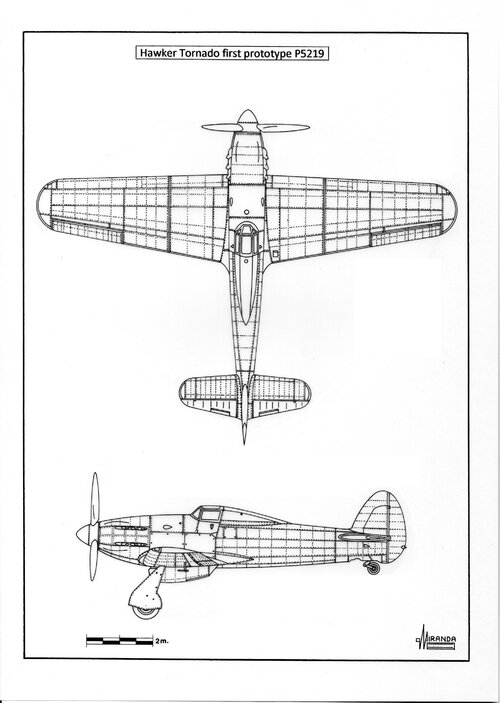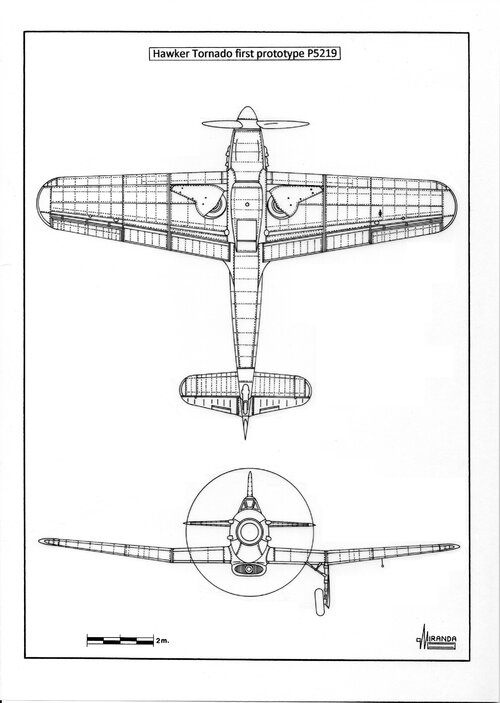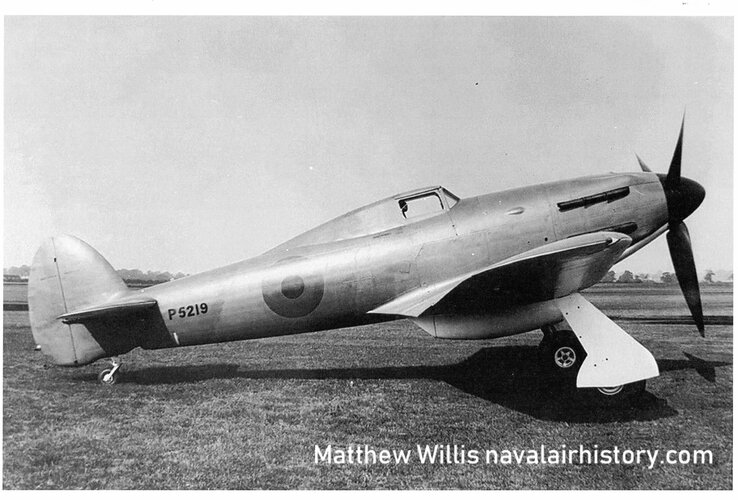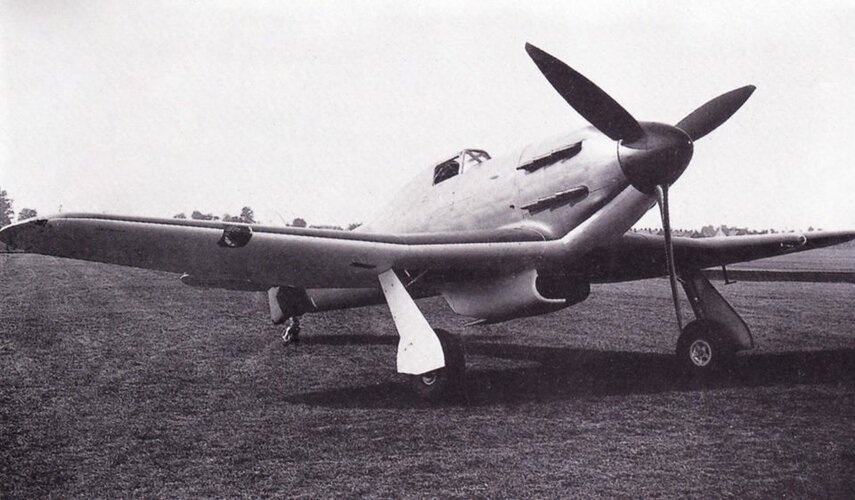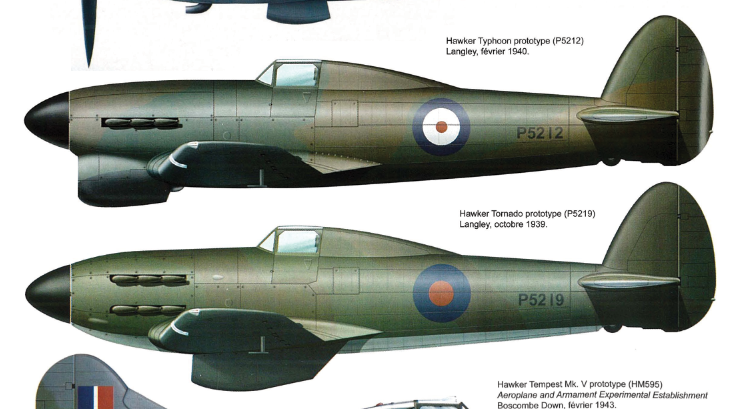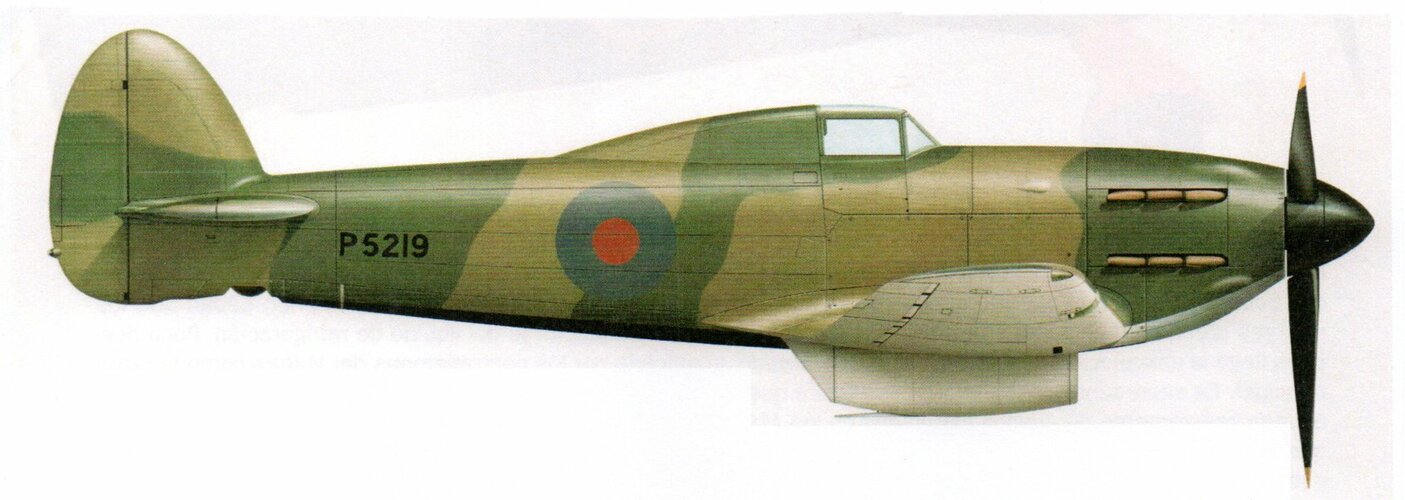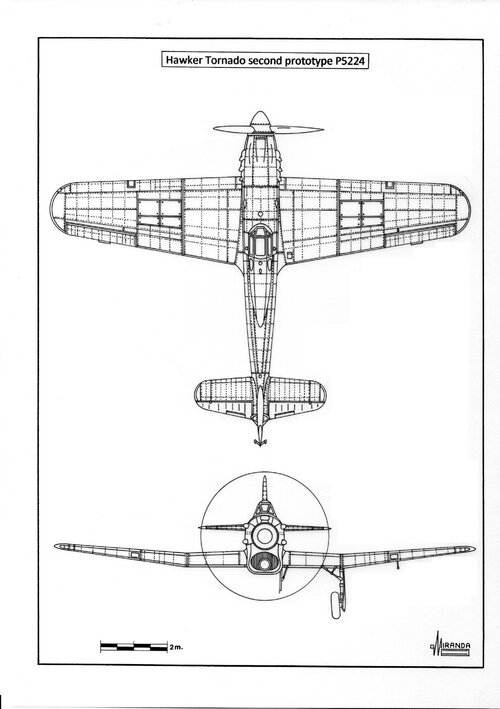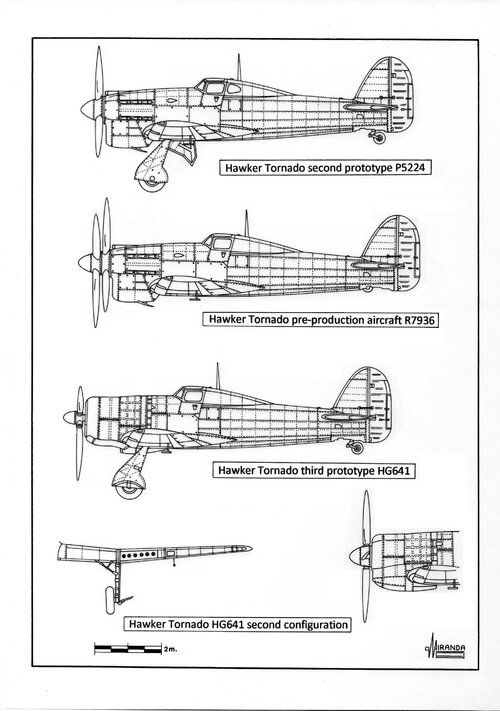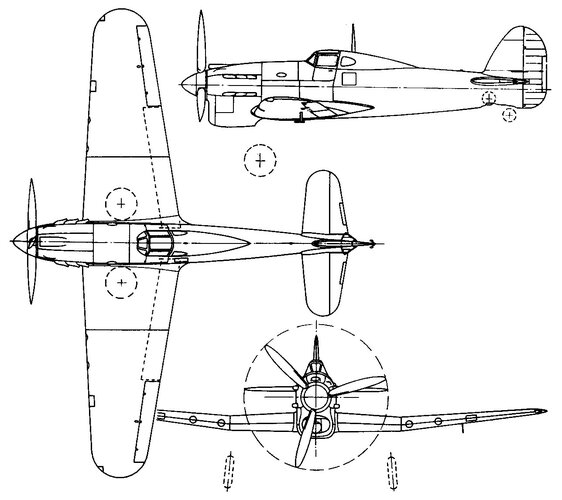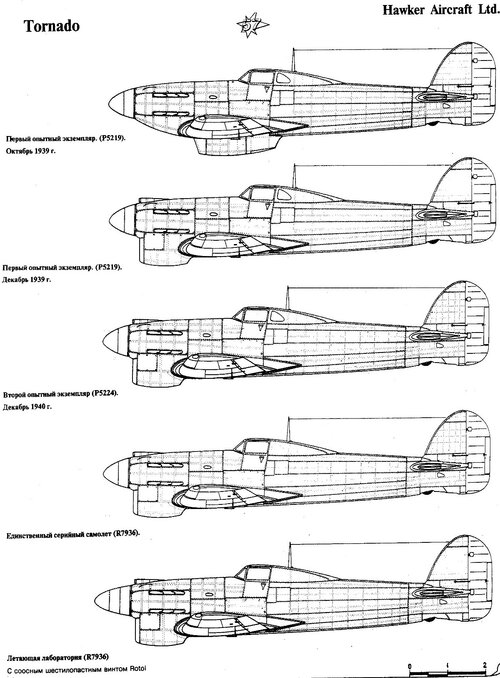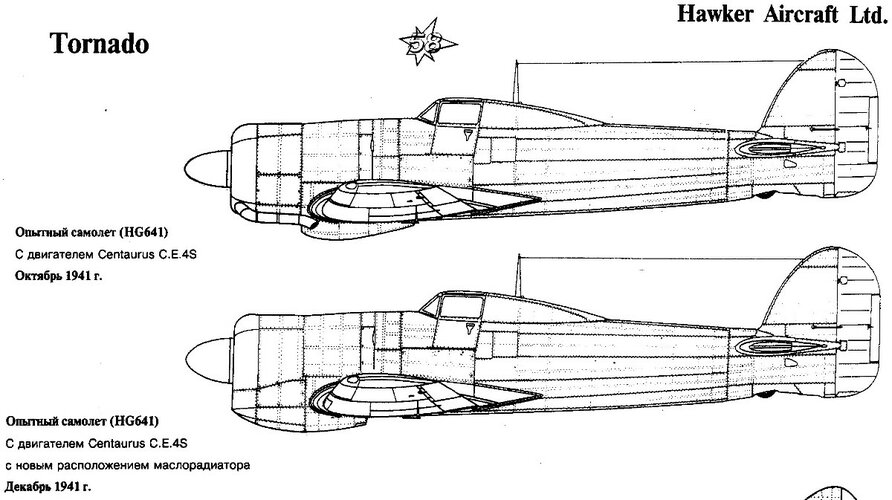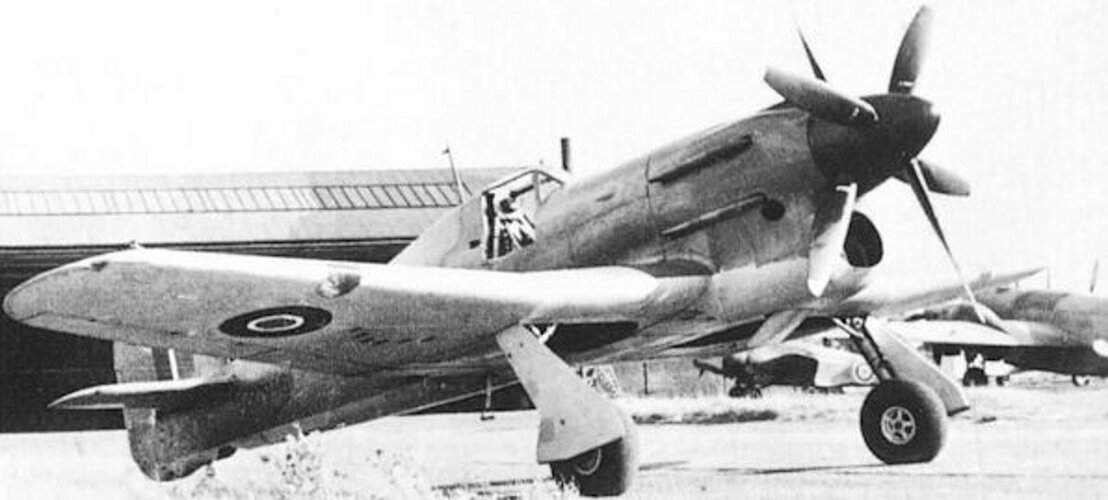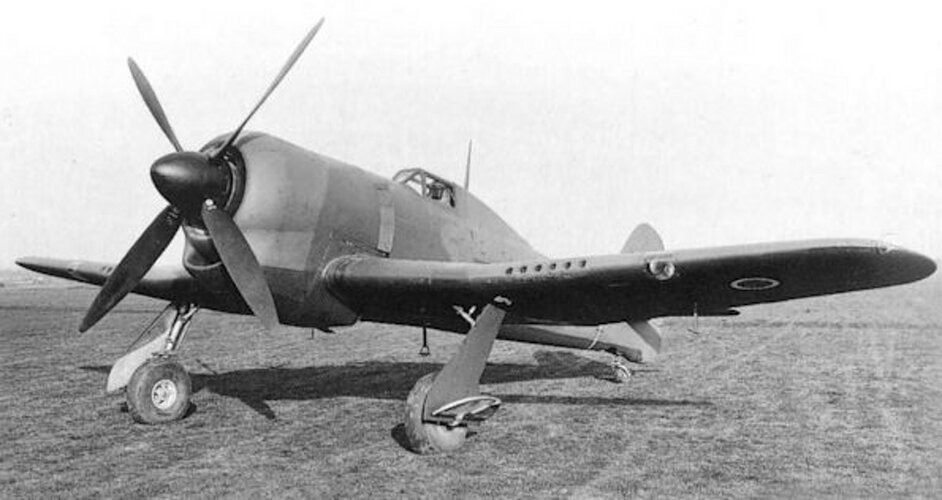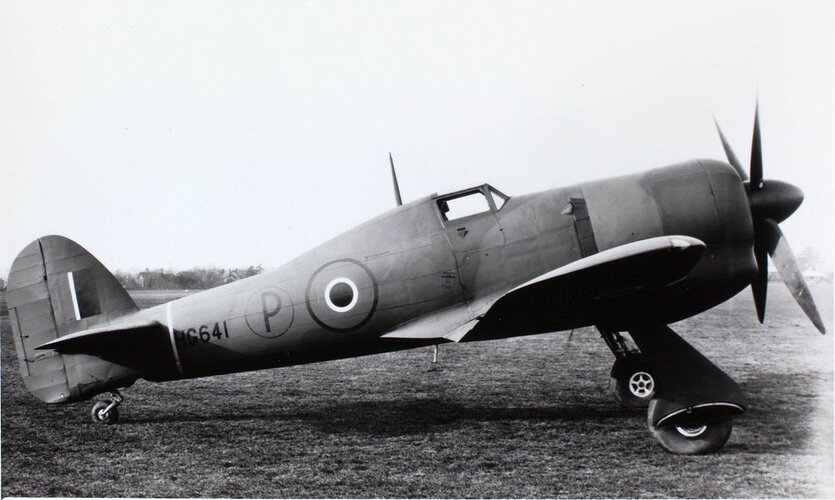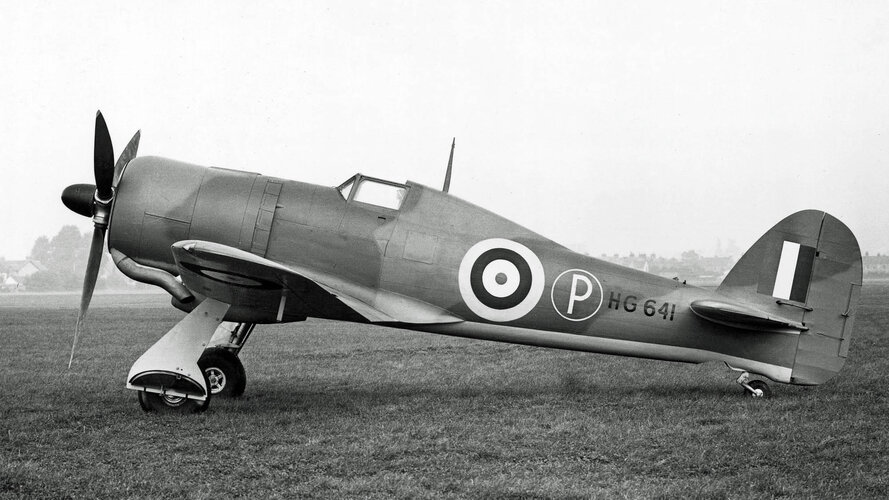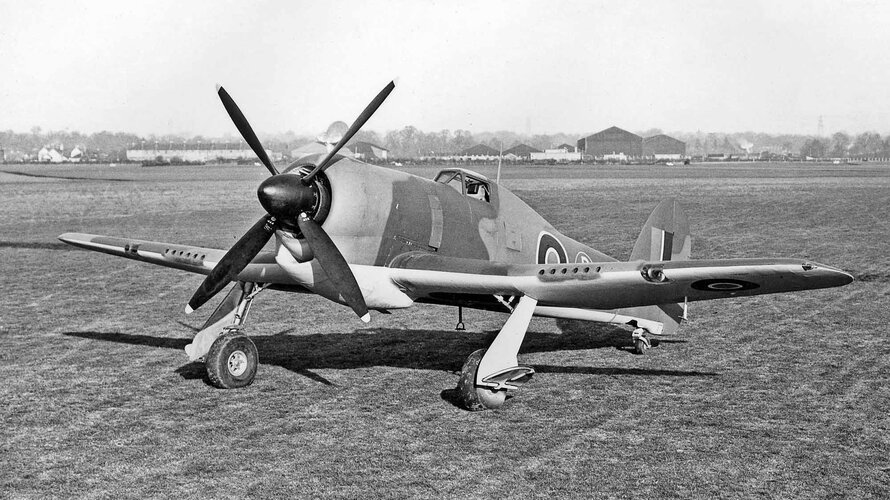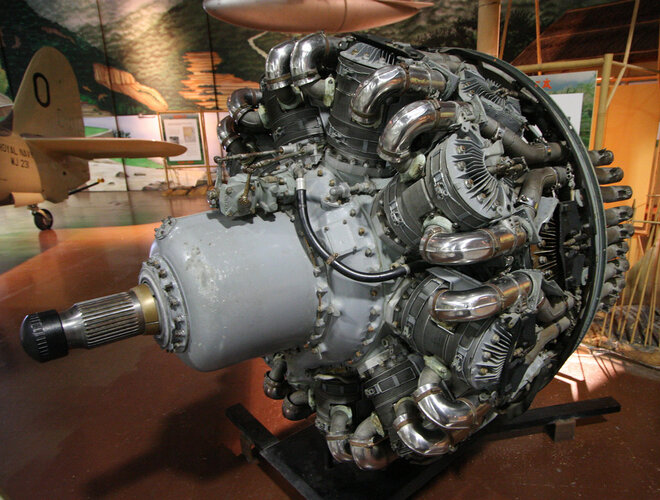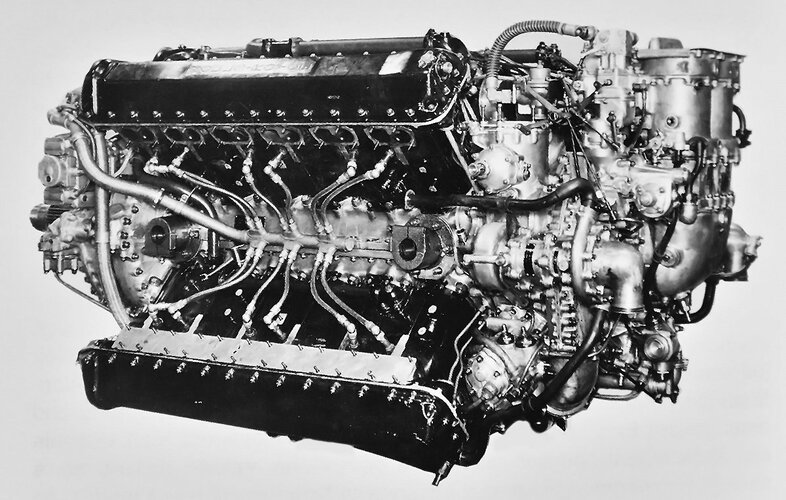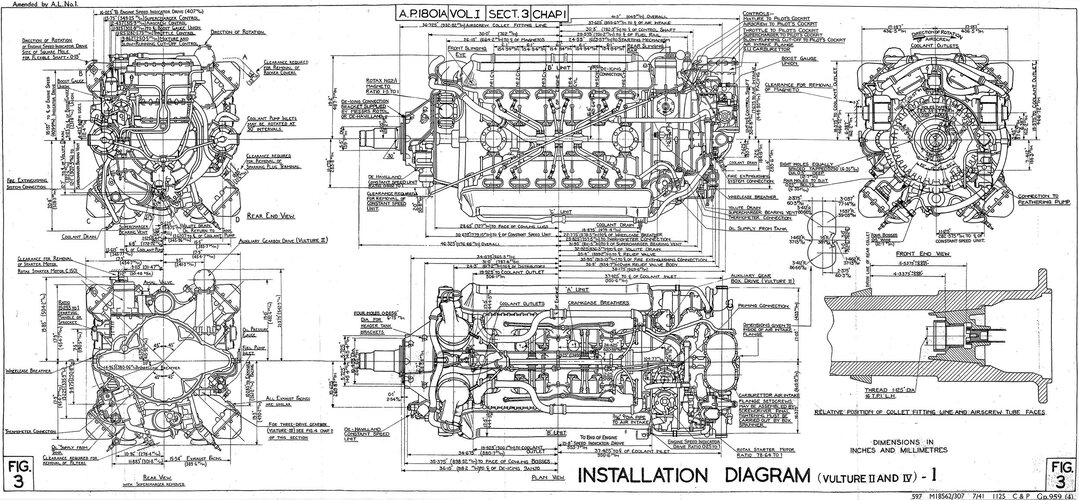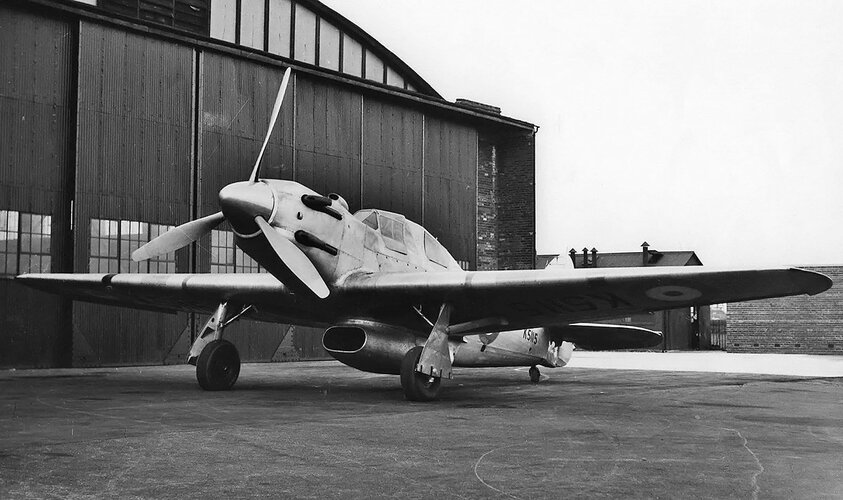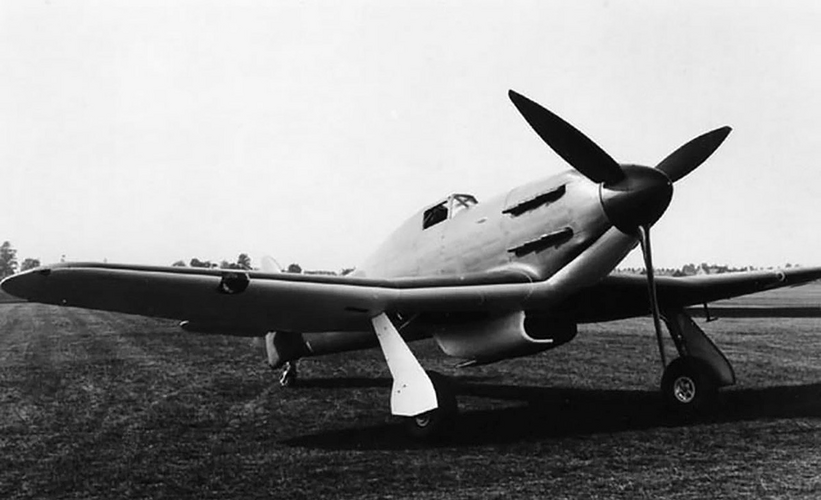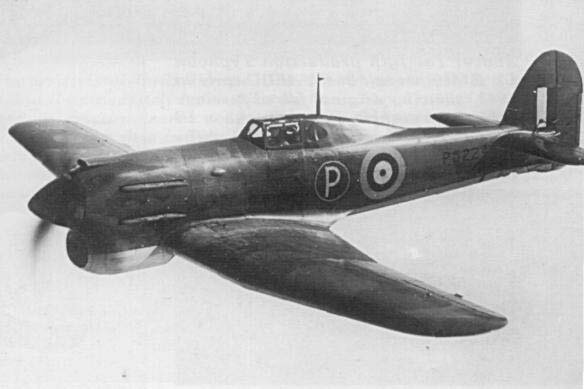The aircraft had a belly-mounted radiator fairing that generated buffeting and excessive drag when the airplane flying near 400 mph, the prototype was painted in standard Dark Earth/Dark Green ‘Type B’ camouflage pattern, with Black/White Special Recognition Markings undersurfaces.
P5219 technical data
Power plant: one 1,760 hp Rolls-Royce X-24 Vulture Mk.II, 24-cylinder ‘X’, liquid-cooled engine driving a three-bladed de Havilland airscrew, wingspan: 41.8 ft (12.74 m), length: 32.7 ft (9.98 m), height: 14.6 ft (4.46 m), wing area: 283 sq. ft. (25.47 sq.m), maximum speed: 425 mph at 23,000 ft, maximum weight: 10,670 lbs (4,834 kg), armament: none.
P5219 technical data
Power plant: one 1,760 hp Rolls-Royce X-24 Vulture Mk.II, 24-cylinder ‘X’, liquid-cooled engine driving a three-bladed de Havilland airscrew, wingspan: 41.8 ft (12.74 m), length: 32.7 ft (9.98 m), height: 14.6 ft (4.46 m), wing area: 283 sq. ft. (25.47 sq.m), maximum speed: 425 mph at 23,000 ft, maximum weight: 10,670 lbs (4,834 kg), armament: none.

